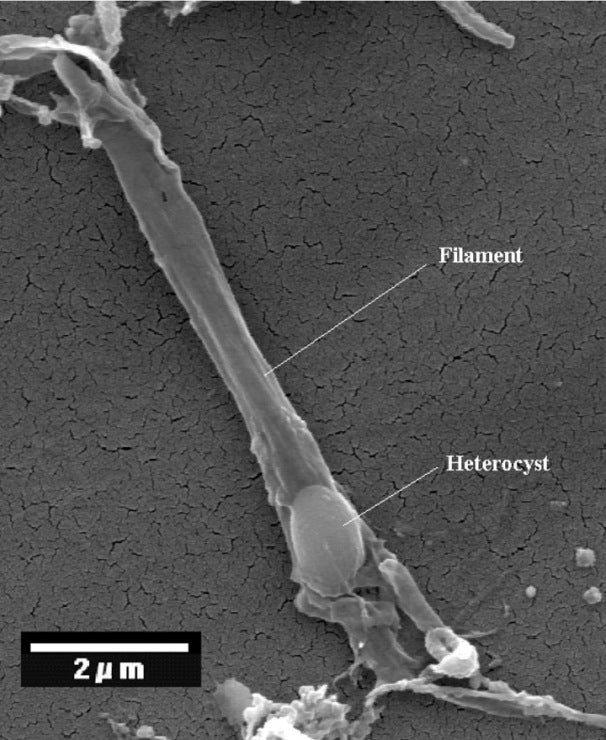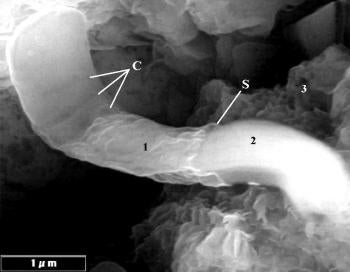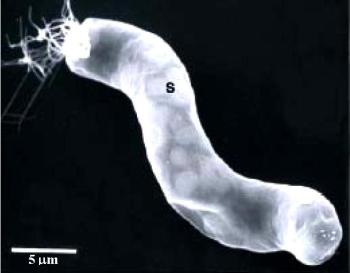Alien Fossils Discovered...Or Maybe Not
Aliens Exist! At least that's what a scientist from NASA's Marshall Space Flight Center thinks. You may recall when NASA discovered that there are bacteria that can live off of arsenic, but this discovery might blow that one out of the water. A study by Dr. Richard Hoover recently published in the Journal of Cosmology examines evidence of microfossils of once-living organisms inside of carbonaceous meteorites. This would seem to be evidence of extraterrestrial life, but it's being met with quite a bit ofskepticism.
Using a Field Emission Scanning Electron Microscope, Dr. Hoover viewed slices that he cut from Alais, Ivuna, and Orgueil CI1 type carbonaceous meteorites. These microfossils are similar to trichomic (hair-like features coming from the surface) cyanobacteria and trichomic prokaryotes. Because the fossilized bacteria are inside the meteorites, Dr. Hoover concluded that the fossilized remains are not contaminats from Earth, but from Space where the microorganisms could have lived on comets, moons, or other bodies in space.
The discovery is so out-of-this-world--literally--that the Journal of Cosmology has invited over 100 experts in the field and has also issued an invitation to over 5000 scientists to review the paper to promote debate, discussion, and to give the discovery a thorough review to verify the validity of the experiment. Prior to this, Dr. Hoover, Astrobiology Group Leader at NASA Marshall Space Flight Center National Space Science and Technology Center in Huntsville, Alabama, has conducted research on meteorites from Antarctica, and studied bacteria from around the world.
Dr. Hoover ran various tests and analysis to study the fossils inside of the meteorites to prove that they are indeed biological in nature. The researcher states that a number of the bacteria were similar to those on Earth, but weren't exact matches. Below are two pictures: The first is from the Ivuna CI1 meteorite, and the second is a the giant bacterium Titanospirillum velox from Earth. You can see the similarities:
They certainly look like bacteria don't they? Maybe they are, but according to Carl Pilcher, director of NASA's Astrobiology Institute, the meteorites fell to Earth some 100 to 200 years ago. Pilcher told the AFP that "the simplest explanation is that there are microbes in the meteorites; they are Earth microbes. In other words, they are contamination." That is, the meteorites have been on Earth long enough that Earth-bound microbes could have found their way into it. Also, according to the AFP, Paul Hertz, the chief scientist of NASA's Science Mission Directorate in Washington, issued a statement saying that NASA dies not support Hoover's findings.
So did we really find evidence of life? Or is there a simpler explanation? If these micro-fossils are really space-fareing bacteria, this discovery is potentially incredibly significant and could prove once and for all that life did (and perhaps does) exist beyond our own planet. It may not be ET, but it would be something and would show that maybe we should put in a little more effort to reach the stars. Stay tuned for updates!
[Journal of cosmology via Digital Trends / Images: Journal of Cosmology via Dr. Hoover and courtesy of Dr. Riccardo Guerrero]




No comments:
Post a Comment